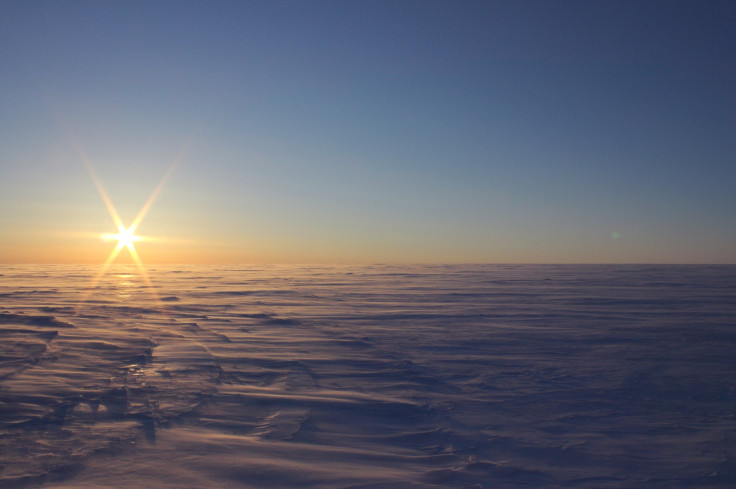Ancient Salty Subglacial Lakes Discovered, Could Bolster Search For Extraterrestrial Life

Scientists located the world's first salty, isolated subglacial lakes in the Canadian High Arctic, a discovery that could bolster the chances of finding microbial life beyond Earth.
The two new lakes, located 550 to 750 meters under the Devon Ice Cap, one of the largest ice caps in the region, were spotted through airborne radar scanning conducted by a multinational team of researchers and scientists from NASA.
"We saw these radar signatures telling us there's water, but we thought it was impossible that there could be liquid water underneath this ice, where it is below -10C," Anja Rutishauser, lead author of the study, said in a statement. Soon they confirmed the presence of subglacial water bodies, the first to be discovered in this part of the world.
Though more than 400 subglacial lakes are present on Earth, mostly in parts of Antarctica and Greenland, the team believes the new ones are more special as they could be the exact habitat scientists need on Earth to see if life could exist in the distant parts of our solar system.
Essentially, there are two reasons for this — isolation and hyper salinization. These water bodies have been locked away from the outside environment for thousands of years and contain extreme levels of salt — apparently four to five times saltier than normal seawater. This not only keeps the water liquid but also makes the waterbodies particularly similar to the hypersaline lakes found within an ice shell on Jupiter's icy moon Europa. This way, the waterbodies could serve as analogs for the distant, ice-covered planetary moon.
"If there is microbial life in these lakes, it has likely been under the ice for at least 120,000 years, so it likely evolved in isolation," Rutishauser added. "If we can collect a sample of the water, we may determine whether microbial life exists, how it evolved, and how it continues to live in this cold environment with no connection to the atmosphere." Other subglacial bodies couldn't do this job as they mostly contained freshwater.
That said, samples from the newly discovered lakes could help scientists confirm the presence of microbial life. If life is found thriving in these isolated and intense conditions in any way, scientists could try and understand its evolution and way of surviving, and use that data to see if something similar could be happening on Europa or not.
The data from the latest observation and eventual sampling would also help the space agency prepare for its Europa Clipper Mission which will place a highly capable, radiation-tolerant spacecraft in a long, looping orbit around Jupiter to investigate Europa’s ice shell with remote sensing techniques.
As of now, the next step for the team is to return to the same area to gather data in relation to the subglacial lakes and the ice caps in the surrounding area.
The discovery of the lakes was detailed in a paper published in journal Science Advances on April 11.
© Copyright IBTimes 2025. All rights reserved.




















